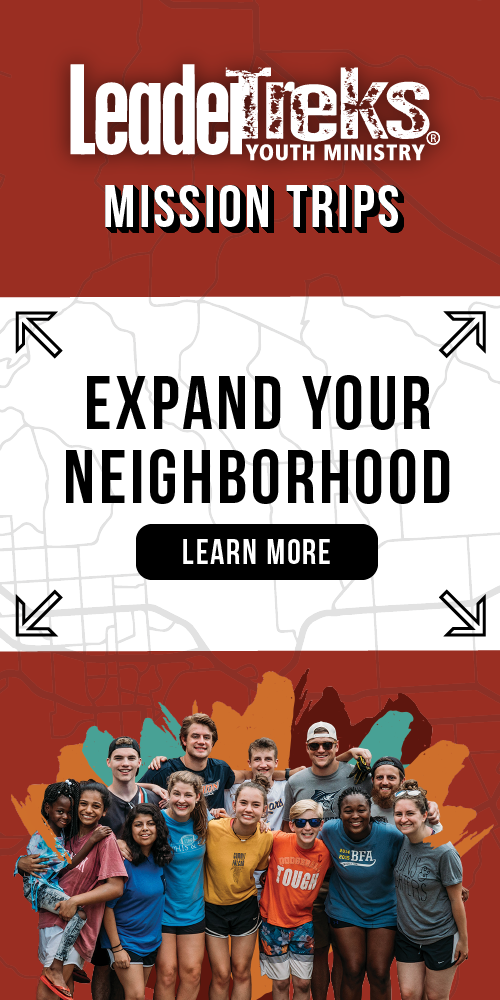Hanging Out is Worthless
A few years ago, I was invited to speak at a high school youth group retreat at a camp. When I arrived on site, I was given a detailed schedule for the weekend. As I scanned the schedule to learn when I was speaking, I glanced over the large group activities, meal times, free time, and hang out time. Wait a second. I read that again: “Hang Out Time.” Six of these one or two-hour blocks were embedded throughout the three-day retreat. (Note: these were in addition to the free time blocks on the schedule.)
I asked the youth pastor what those spaces were for. He said, “We did a survey to ask the students what they really wanted to do on the retreat, and they said, ‘We just want to hang out with each other.’ It sounded like a good way to build community, so we added in a bunch of space to do just that.”
I was shocked. I wanted to say something like, “Are you serious? You must be new at this! You have an awesome opportunity to invest in these amazing students, but you’re just going to let them HANG OUT instead of programing with purpose? Why drag them out to a camp just so they can do what they’d be doing at home?” But I decided to bite my tongue. I’d wait and see what would actually happen during the first hang out time. Maybe those students were unlike anything I had experienced. Maybe they would use those blocks to purposefully build community.
During the first hang out time, I observed about 90 percent of the students glued to their iPhones in the dinning hall. The other 10 percent were asleep on couches outside the camp store.
The youth pastor and I exchanged glances, and I motioned toward the door. We stepped outside, and he exploded with frustration for letting his younger staff persuade him to forego his detailed program plan for this worthless hang out time. As he cooled down, we moved into fix-it mode.
Our mission was clear: eliminate all hang out time. We asked the camp staff for more activity time during which students could choose from a variety of things to do. They agreed, so we added it in. I suggested creating a “hot topic” discussion time each day where students could ask any question on a given topic (college life, dating, identity), and a panel of adults would field those questions and facilitate the discussion. We scratched off three more hang out time blocks. Finally we added in an additional worship time on the last day. I agreed to do a short talk, and the band jumped at the chance to do another five-song set.
Within an hour, we had a new schedule. We printed off copies in the camp office, posted them everywhere, and told students to trash the old ones. The funny thing is, the students had no clue what had changed.
Fed up with hanging out
Every year the youth workers I speak with feel tremendous pressured to let students just hang out for longer and longer chunks of time. But students don’t need more time sitting together in a room updating their Instagram accounts and scrolling through Twitter. Yes, students need rest and downtime with each other. They’re overworked and over-scheduled. But they also need to talk, laugh, build things, play, learn, and grow with others. Community building doesn’t just happen like it used to. Students won’t use hang out time to complete a project, play a board game, make up a skit, or go on a hike together. If you want to see real community, you need to program for it.
What can you do when your students are asking for hang out time but you really need to build community? Here are a few ideas:
- Do team-building activities. This can work for large groups, too—just divide into smaller, more manageable groups. Three years ago, LeaderTreks facilitated team-building initiatives for over 300 students at the Student Leadership Conference, so it can be done. LeaderTreks has a ton of free team-building initiatives you can use. Set up a free account on leadertreks.org, and you can download them totally for free from the Freebies section of our site.
- Do a “hot topic” discussion. There are so many cool ways to do this so the discussion is both informative and community building. Have students write down questions for you to pull out of a hat. Or present a hypothetical problem: “One of the student leaders in the youth group gets pregnant. What do you do?” Divide students into small groups to discuss, and then ask them to share their best ideas with the large group. Discussion and problem solving around relevant and difficult topics will impact students in amazing ways.
- Get them active. Plan activities that get their heart rates up. You don’t have to rely on sports. Choose games and activities that require students to engage physically.
- Ban electronic devices. I’m not a smart phone hater, but during retreats and camps they’re a huge distraction. You may not be popular at the beginning, but asking students (and adults!) to unplug for two or three days can be really healthy. You’ll be surprised how engaged and creative your students and leaders can become when they aren’t glued to a screen.
I’d love to hear your suggestions if this struggle with hang out time is a reality for you. How do you shape your students’ desire to “just hang out” to build real community?
CC Image courtesy Brian Hathcock on Flickr.
About the Author
John Vandervelde
John Vandervelde serves as the Executive Pastor of Glen Ellyn Bible Church in the Western Suburbs of Chicago. He and his wife, Kari, have been married for 15 years and have five children. When he’s not at the church or chasing his kids around, John enjoys running, biking, and competing in triathlons.




